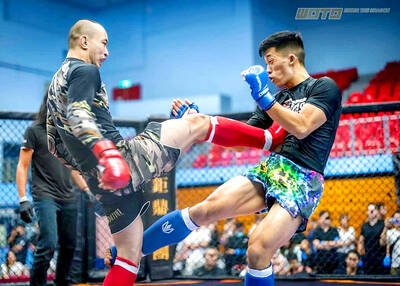Practically all the half million raccoons which infest the forests and parks of Central Europe are believed to descend from just four animals released in the woods near the German city of Kassel in the Nazi period.
Raccoons have never had a good press in Europe. Not only are they North American interlopers, there is also a persistent story that they were introduced to provide hunting pleasure for Marshal Hermann Goering, the head of Adolf Hitler’s Luftwaffe.
But a recent examination of the files, 75 years later, shows that the Nazi part of the story, which appears in many textbooks, is untrue.
Goering did not even know about the raccoons’ release, and the authorities in Berlin tried to stop their acclimatization.
But it was too late. Rangers at Lake Eder in Germany had already freed two breeding pairs on April 12, 1934. Not without difficulty either: the cautious animals would not initially come out from their box, despite being offered some eggs and dead squirrels.
But the hills around Kassel were to provide the freed raccoons with the perfect environment: lots of woods, rivers and food. The mammals grow up to 70cm in length and usually feed at night.
It is estimated a couple of dozen breeding pairs were established by 1945. Another 25 years on, there were 20,000. And the cute critters with the burglar-style black markings round the eyes kept on multiplying.
Kassel remains the capital city of raccoon expansionism in Europe.
“Round here, just about everyone’s garden has a raccoon living in it in summer-time,” said biologist Frank-Uwe Michler in the city. Genetic studies show that raccoons in Hamburg and Bavaria also descend from the same two Lake Eder pairs.
SKINS AND MEAT
Horst Marohn, of the state of Hesse forestry authority, says, “All the books claim that Goering personally ordered this rather foolhardy disturbance of our fauna.” But Marohn and senior ranger Eberhard Leicht checked the official files and found a different story.
As supervisor of hunting in the Voehl and Lake Eder areas, Leicht is the modern successor of the rangers who not only freed the raccoons but documented the whole matter in correspondence.
“It wasn’t just someone opening a cage to see what happened. It all had to be officially reviewed, even back then,” Leicht said. The proposal had apparently come from fur merchants, who suggested the animals would provide both skins and meat.
However Kassel had a particularly bureaucratic government, since it was part of the state of Prussia, and everything had to be approved in the capital, Berlin, by the office of Prussia’s master of the hunt.
BUREAUCRATIC INERTIA
Two of the Third Reich’s most senior animal-biology officials promptly objected.
One was Carl Hagenbeck, a zoologist whose family conducted one of Germany’s most famous zoos in Hamburg.Hagenbeck said he knew of a raccoon that had escaped in the city and constantly gobbled up city-dwelling pets including ducks and guinea pigs.
The other was Lutz Heck who ran the Berlin Zoo and who said releasing raccoons was not a good idea. The office of the Prussian master of the hunt vacillated for months before sending a veto to Kassel.
“But by that time, it was too late,” said Leicht. “A predecessor of mine, Baron Wilhelm Sittich von Berlepsch, had let the raccoons out.” The females were gestating and the foresters apparently thought it was best for the young to be born in the wild.
“It is true that Hermann Goering was in charge of the hunt office, but I am pretty sure he knew nothing about it,” said Leicht.
The name of the Nazi, who was a keen hunter, does not appear on any of the documents about the case.
Of course the facts have never stood in the way of a good story. Decades later, reports appeared in the British press that wryly described the animals as the “Nazi raccoons” and many Germans today see the release as another Nazi misdeed.
Heck’s and Hagenbeck’s concerns turned out to be right. Raccoons have become a pest in quite a few locations in Europe.
Leicht suggests raccoons are not all that bad though.
“Of course they can’t resist an egg if they find it. But they are not particularly talented predators, they can’t climb trees very well and often they are really quite clumsy. They are more gatherers than hunters. And it’s not true they were the Nazis’ pet,” he said.

Next week, candidates will officially register to run for chair of the Chinese Nationalist Party (KMT). By the end of Friday, we will know who has registered for the Oct. 18 election. The number of declared candidates has been fluctuating daily. Some candidates registering may be disqualified, so the final list may be in flux for weeks. The list of likely candidates ranges from deep blue to deeper blue to deepest blue, bordering on red (pro-Chinese Communist Party, CCP). Unless current Chairman Eric Chu (朱立倫) can be convinced to run for re-election, the party looks likely to shift towards more hardline

Sept. 15 to Sept. 21 A Bhutanese princess caught at Taoyuan Airport with 22 rhino horns — worth about NT$31 million today — might have been just another curious front-page story. But the Sept. 17, 1993 incident came at a sensitive moment. Taiwan, dubbed “Die-wan” by the British conservationist group Environmental Investigation Agency (EIA), was under international fire for being a major hub for rhino horn. Just 10 days earlier, US secretary of the interior Bruce Babbitt had recommended sanctions against Taiwan for its “failure to end its participation in rhinoceros horn trade.” Even though Taiwan had restricted imports since 1985 and enacted

Enter the Dragon 13 will bring Taiwan’s first taste of Dirty Boxing Sunday at Taipei Gymnasium, one highlight of a mixed-rules card blending new formats with traditional MMA. The undercard starts at 10:30am, with the main card beginning at 4pm. Tickets are NT$1,200. Dirty Boxing is a US-born ruleset popularized by fighters Mike Perry and Jon Jones as an alternative to boxing. The format has gained traction overseas, with its inaugural championship streamed free to millions on YouTube, Facebook and Instagram. Taiwan’s version allows punches and elbows with clinch striking, but bans kicks, knees and takedowns. The rules are stricter than the

Last week the story of the giant illegal crater dug in Kaohsiung’s Meinong District (美濃) emerged into the public consciousness. The site was used for sand and gravel extraction, and then filled with construction waste. Locals referred to it sardonically as the “Meinong Grand Canyon,” according to media reports, because it was 2 hectares in length and 10 meters deep. The land involved included both state-owned and local farm land. Local media said that the site had generated NT$300 million in profits, against fines of a few million and the loss of some excavators. OFFICIAL CORRUPTION? The site had been seized